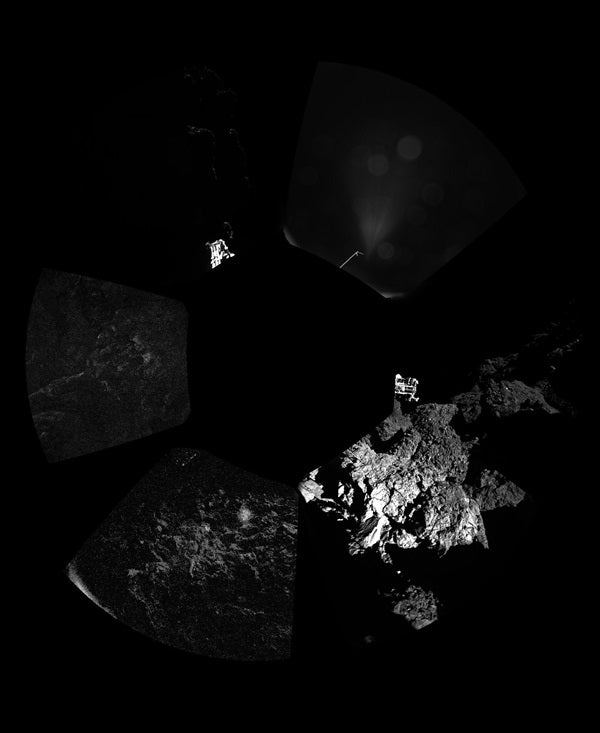UPDATE [4:35 p.m. CST]: Philae reestablished connection with Rosetta and is uploading the results of its past few hours, including a success with the SD2 system. With their next commands, mission scientists will attempt to turn the lander to a position where a larger solar panel could possibly receive more sunlight.
The team behind Rosetta’s Philae lander is in a race against the clock — or, more accurately, Philae’s remaining power. Due to landing in a shadowy area of Comet 67P/Churyumov-Gerasimenko — the exact location is still unknown — the probe is receiving far less solar power than was planned to keep it going after Philae’s main battery power runs out at the end of its primary mission, which is scheduled to last 65 hours. In mission scientists’ ideal situation, Philae’s solar panels would receive seven hours of sunlight during each comet day (which lasts 12.5 hours). In its position, however, one of the panels is getting about 1 hour and 20 minutes of sunlight while two others are receiving about 20 minutes of sunlight.
Still, what has been down since Philae’s two-bounce landing November 12 has pleased mission scientists. Philae received multiple commands to begin using its various science instruments over night, including MUPUS, which should have hammered into the comet’s surface, and APXS, a spectrometer that would investigate 67P’s surface composition. According to Stefan Ulamec, the lander manager from the DLR German Aerospace Agency, the resulting data from these instruments were successfully downlinked earlier today. The lander has gathered between 80 and 90 percent of the information the craft was designed to collect, Ulamec said.
With the next set of commands, Philae has begun using its SD2 system, which should drill and sample the surface. Results from that instrument are expected later today as Rosetta returns to the lander’s view — if Philae’s power doesn’t run out. According to Valetina Lommatsch of DLR, simulations indicate that there could be enough power left for Philae to relay its data after it reestablishes a link with Rosetta, but it’s not a guarantee. During a Google Hangout this morning, Lommatsch urged everyone to keep their fingers crossed.










